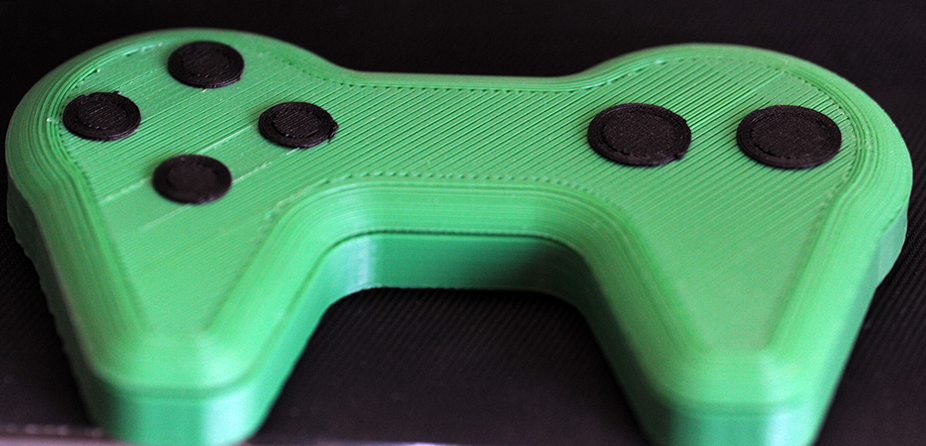Carbomorph

Carbomorph is an inexpensive plastic material that can be used to 3D print customized electronic devices. The plastic is conductive and circuit boards can be added to the printed gadget. This may expand the creation of the game controllers and other electronics that are custom-fit for the user.
How Carbomorph Works
To create carbomorph, carbon black is added to a matrix polycaprolactone (PCL). Carbon black is a mixture of tar and vegetable oil, and PCL is a biodegradable polyester. Carbomorph is 3D printable and allows electronic sensors to be embedded within 3D printed objects.
Carbomorph conducts electricity and is piezoresistive, meaning that the material reacts to mechanical elements, such as pressing a button. This allows electronic tracks and touch-sensitive areas to be 3D printed. A circuit board can be easily connected to the printed device.
This opens up the possibility of 3D printed electronics, such as game controllers. The researchers have already printed out a game controller and a mug that can tell how much liquid is in it. There are also exciting projects going on with this technology to provide disabled gamers with light-touch sensitive game controllers. This way, the controller will respond to the lightest touch and gamers can keep on playing.
History of Carbomorph
In 2012, researchers at the University of Warwick developed carbomorph. Dr. Simon Leigh in the School of Engineering led the project and expects that students will now be able to print their designs in order to test them in the classroom. This will give students hands-on experience rather than just theoretical knowledge. This new material may lead the way in customized electronics to fit the needs of the individual.
To learn more about the latest in 3D Printing, check out our 3D printing.